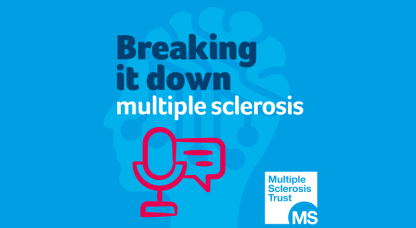Pain, fatigue, depression, and anxiety are common in MS, often experienced as a cluster of symptoms which can impact many aspects of daily life. Relatively little is known about how they affect people earlier in the course of MS so researchers in the United States monitored this cluster of symptoms and their impact on quality of life during the first year after diagnosis of MS.
230 participants newly diagnosed with MS were asked to complete questionnaires which assessed levels of disability, pain, fatigue, depression, anxiety and quality of life at 1, 2, 3, 6, 9, and 12 months post-diagnosis.
Clinically significant symptoms were reported by the majority of participants: 63% had fatigue, 51% had pain, 47% had depression and 39% had anxiety. Most participants reported having more than one symptom: 21% had two, 19% had three, and 17% had four symptoms. A further 23% reported no symptoms and 20% reported just one symptom. The most common combination of symptoms was pain and fatigue. There were fluctuations in symptom development and recovery at the individual level. Approximately a third of participants without significant pain and fatigue at the start of the study reported significant levels later, and nearly half with significant depression and anxiety symptoms at the start reported insignificant levels later in the year.
Quality of life remained relatively high for most people but those who had a poorer quality of life at the start of the study also remained at that level during the first year.
The results show that, in the year following diagnosis, pain, fatigue, depression and anxiety are already common. The authors highlight the importance of early monitoring of symptoms so that people who might benefit can be identified and offered appropriate treatments. A better understanding of the factors that cause symptoms to fluctuate over time could identify personalised treatment strategies, combining drug treatments with symptom self-management techniques, like cognitive behavioural therapy or mindfulness.
Background
Pain, fatigue, depression, and anxiety are common symptoms in MS. People often experience them as a cluster of symptoms which form a vicious cycle with each feeding into the others and impacting many aspects of daily life. Studies have investigated these symptoms in people who have had MS for some years but relatively little is known about how they affect people earlier in the course of MS. Researchers in the United States monitored this cluster of symptoms and their impact on quality of life during the first year after diagnosis of MS.
How this study was carried out
Participants newly diagnosed with MS or clinically isolated syndrome were recruited at an MS clinic in the States. They were asked to provide personal details such as age, gender, race and ethnicity and complete questionnaires which assessed levels of disability, pain, fatigue, depression, anxiety and quality of life at 1, 2, 3, 6, 9, and 12 months post-diagnosis.
What was found?
230 people completed the study; the majority were Caucasian (87%) and female (71%). Clinically significant symptoms were reported by the majority of participants: 63% had fatigue, 51% had pain, 47% had depression and 39% had anxiety. Most participants reported having more than one symptom: 21% had two, 19% had three, and 17% had four symptoms. A further 23% reported no symptoms and 20% reported just one symptom. The most common combination of symptoms was pain and fatigue. Symptoms and symptom combinations were more common in people with moderate to severe disability.
While the proportion of people with significant symptoms remained the same over the course of the study, there were fluctuations in symptom development and recovery at the individual level. Approximately a third of participants without significant pain and fatigue at the start of the study reported significant levels later, and nearly half with significant depression and anxiety symptoms at the start reported insignificant levels later in the year.
Quality of life was, on average, relatively high and remained so throughout the first year post-diagnosis. However, people who recorded a poorer quality of life shortly after diagnosis tended to continue at that level during the first year.
What does it mean?
The results show that, in the year following diagnosis, pain, fatigue, depression and anxiety are already common. Although slightly less than a quarter of participants did not report any clinically significant symptoms during this period, more than three-quarters did, with over one-half reporting two or more symptoms.
The authors highlight the importance of early monitoring of symptoms so that people who might benefit can be identified and offered appropriate treatments. Individual fluctuations in symptom development and recovery suggest that various factors could impact symptom levels over time. A better understanding of these factors could identify personalised treatment strategies, combining drug treatments with symptom self-management techniques, like cognitive behavioural therapy or mindfulness.
The authors acknowledge that study participants were predominately white, female and well-educated and recommend that future studies should cover a more diverse population. They also recognise that further studies are needed to show whether offering treatments promptly during the post-diagnosis period would prevent symptoms becoming long-standing and more severe.
Valentine TR, et al.
Prevalence, co-occurrence, and trajectories of pain, fatigue, depression, and anxiety in the year following multiple sclerosis diagnosis.
Multiple Sclerosis Journal 2022; 28(4): 620-631.
Summary
Alschuler KN, et al.;
Quality of life in individuals newly diagnosed with multiple sclerosis or clinically isolated syndrome.
Journal of Neurology 2022; 269(5): 2560–2572.
Summary
Learning to manage your symptoms takes time and you may need to try several options to find out what works best for you.
Treatment for MS symptoms may include medication, therapies, such as physiotherapy, and self-management techniques. Some people explore the use of complementary or alternative medicines (CAMs).
Read about the different approaches to managing symptoms.
More information about managing pain, fatigue, depression and anxiety.


